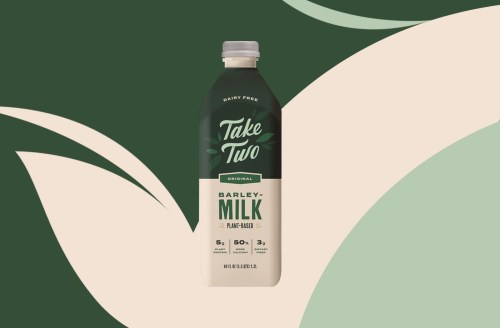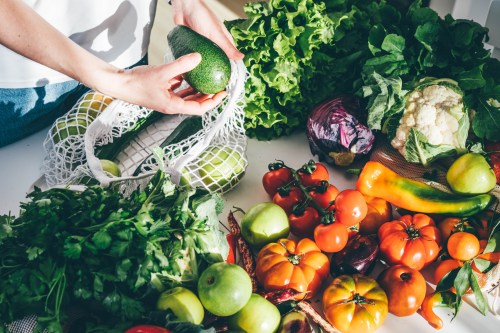Our editors independently select these products. Making a purchase through our links may earn Well+Good a commission
Barley Milk Might Just Be the Most Eco-Friendly Alt-Milk on the Market
There's a new alternative milk on the market: barley milk. Find out what it is, what's in it, how it stacks up nutritionally, and how it tastes.

Until now, there’s only been one beverage that barley has been used for: beer. Other than that, the only places you’re likely to see it pop up is in soups, stews, and grain bowls. But Sarah Pool, the CEO and co-founder of Take Two Foods, decided to try something that hadn’t been done with barley before: Milk it.
“The lightbulb moment came from the realization that billions of pounds of golden barley are discarded each year during beer production,” Pool says. “Brewers extract the sugars from the grain, and the nutrient-dense fiber and protein that is leftover becomes what is called ‘spent grain.’ Up until now, spent barley grain has gone to feed livestock or ends up in landfills.” Wouldn’t it be cool if there was a way to give this powerhouse plant protein a second life, she thought? And then she did it.
Take Two’s barley milk ($10 for two) is made with rejuvenated barley—the upcycled spent grain Pool wanted to give new life. It also contains pea protein, chicory root, coconut, and sunflower oil. It’s a formulation that Pool says took three years to perfect. “Our biggest challenge was in the development of the process to save the spent grain, as it was the first time it had been pursued at this level of technicality and size,” she says. They also wanted to offer a nutritional profile that was similar to cow’s milk, which is where those other ingredients come in. The chicory root upped the fiber (one serving has three grams, compared to cow’s milk, which has none), the pea protein adds protein (one serving has five grams, compared to the eight in 2-percent milk), and the coconut cream and sunflower oil both add healthy fats. In this way, it’s truly formulated to provide energy.
While nuts in many of the other alternative milks on the market are also a good protein source, one criticism they are often met with is not being environmentally friendly—especially almond milk, since almonds take a lot of water to grow. But this rejuvenated barley milk actually is, in many ways, good for the planet. “Project Drawdown heralds food waste reduction and plant-rich diets as two of the most important and impactful ways to mitigate climate change,” Pool says. This product, being plant-based and made from leftover barley, achieves that on both fronts.
Okay, but how does it taste? That’s the real question, right? While Take Two sells a chocolate, vanilla, and a special “chef’s blend” for baking, I decided to taste-test the original flavor to really get a feel for how the latest alt-milk compares. What I first noticed was the color, which is a muddy brown. I actually double-checked the label to make sure I hadn’t poured myself a glass of the chocolate flavor by mistake, but nope, that’s just the color of barley coming through. I expected the milk to taste earthy, but it’s actually slightly sweet due to the inclusion of the coconut. It certainly did not taste like a grain bowl. It was that sweetness that makes it one of the best-tasting alternative milks I’ve tried, and trust me, I’ve tried a lot.
With its protein, fiber, healthy fats, eco-friendliness, and taste, I personally don’t see a downside to the barley milk. With all of those upsides, it just might rival beer as the best use of barley yet.
Sign Up for Our Daily Newsletter
Get all the latest in wellness, trends, food, fitness, beauty, and more delivered right to your inbox.
Got it, you've been added to our email list.









